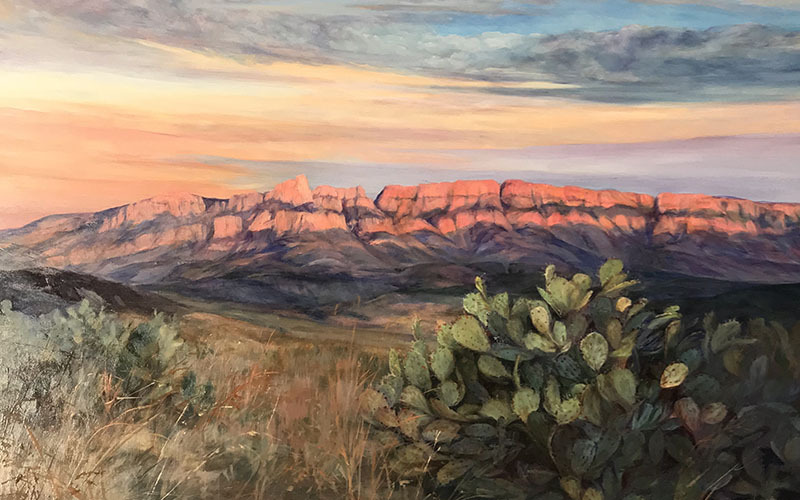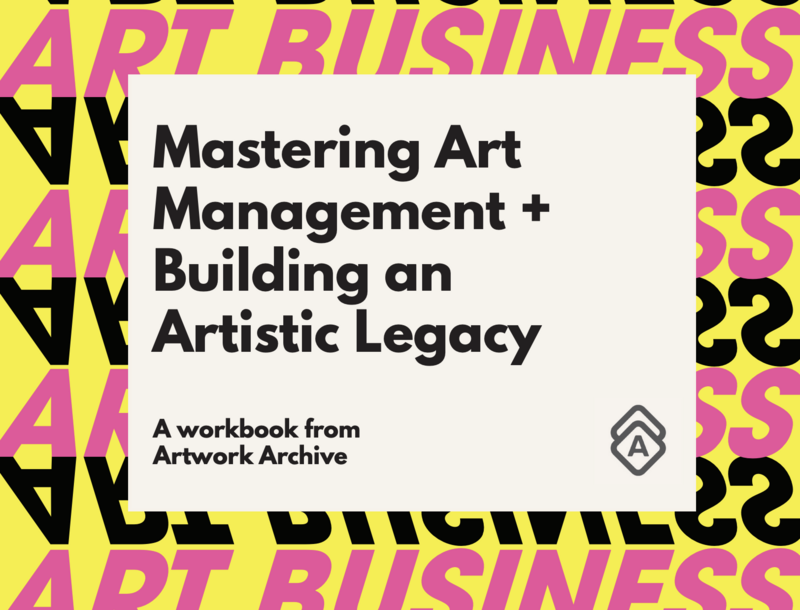Lindy Cook Severns, detail of Sierra del Carmen in the Arms of the Setting Sun, Oil, 36 x 24 x 0.15 in
How getting organized can take your art business to new heights.
For many artists, the distance from passion to profession can seem as vast as the West Texas skies that inspire Lindy Severns.
A self-described "sky painter," Severns has made art all her life. "My passion for painting dramatic skies stems from being a native West Texan and growing up under vast heavens with infinite horizons," she explains.
Her unique perspective wasn't just shaped at ground level, either—it was honed over years at cruising altitude: "My husband says my affinity for skies is also from all those years I spent in the cockpit of a corporate jet, dodging thunderstorms and watching sunsets from 41,000 feet," she recalls.
But making the leap to being a professional artist meant getting serious about organization, sales, and contact management. In this edition of our Art Business Diaries, we hear from Severns on how she has masterfully nagivated turning her passion for skyscapes into a sustainable art business.
Lindy Severns has found a way to balance her art and business—while staying true to her vision.
For Severns, the journey from sky-gazing hobbyist to art professional didn't happen overnight. Her first step was to create clear boundaries between the creative process and the business aspects of her art practice. Now, when she paints, she keeps financial considerations firmly outside her studio door.
"I never step up to my easel thinking about money," she emphasizes. It's a way of maintaining artistic integrity, and it lets her stay in the zone while she's working. She doesn't take calls when she's painting, and she doesn't interrupt her flow with email checks—just pure creative focus on her art.
But when it comes time to focus on the business side of her practice, she approaches it with disciplined consistency.
"I prioritize regular marketing like I do brushing my teeth," she states. She closely monitors her inventory and sales data to inform decisions about what to paint next, considering factors like size and subject matter based on market demand.
"This two-step approach has made me not only a successful artist, but also a very happy one," she explained.
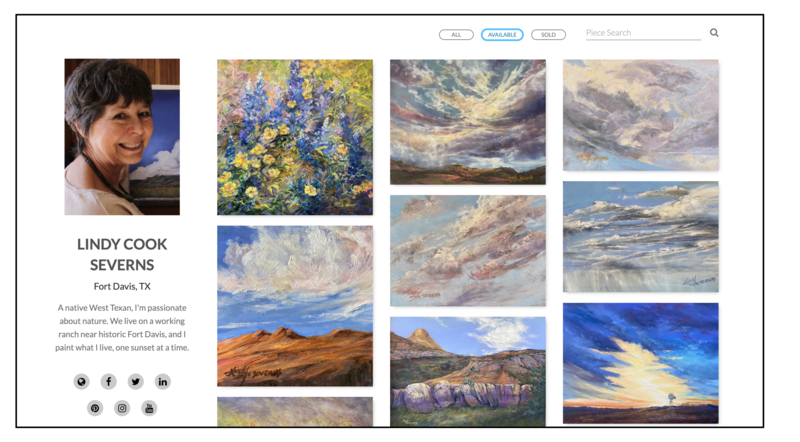
Lindy Severns' Public Profile on Artwork Archive
Despite doubters along the way, the artist persevered, knowing she was a painter at heart.
"My parents were both educators who encouraged my art but who, when I entered college as a studio art major, assumed I would teach. I didn't want to teach art, I wanted to make it," she explains.
Despite discouragement from an art professor who told her she'd never make a living as an artist, especially as a woman, she persevered. "I just kept painting, because that was who I was, a painter. Just not a professional artist," she says.
Her early career was marked by modest successes. By her late twenties, she was in a gallery selling for just enough to pay for framing and doing art festivals. "But I wasn't trying to make a living at it, just having fun doing my thing," she recalls.
Then came an unexpected breakthrough: "Through the grapevine, someone at my husband's office saw my work. One thing led to another, and the next day I had a commission for ten large oils," she shares. This success shifted her perspective, and she started taking her art career more seriously.
When the landscape painter went full-time, she realized she needed a better system.
When Severns started out as a painter, she didn't keep track of her artworks or sales beyond taking photos. In 2005, she began painting full-time, which made things more complicated.
As she explains, "Instead of depending on galleries to keep track of my art, as I'd haphazardly done prior to this, I made a crude Word table and began logging sales and collectors." After a couple of years, she realized she should also be keeping an inventory of her art, so she added more columns to her increasingly complex Word document.
This ultimately proved so unwieldy that she began looking for inventory software, but nothing she was looking at fit her needs as a professional artist. She was getting a little desperate when she finally found Artwork Archive. Using that old, clunky Word document, she slowly copied in all her information until she had her whole inventory on Artwork Archive, past and present, complete with detailed information about collectors, prices, notes and photos of all her work.
In the past, Severns says, "I felt anguish whenever I found an old listing where I hadn't shown the size of the painting, or the buyer, or where it sold from." Now, all of that information is easily stored in Artwork Archive.
"I probably open Artwork Archive a couple of times daily, minimum," she states. She closely monitors her inventory, adding new works immediately after signing them, complete with photos and detailed descriptions. The platform has become her command center for both the creative and business sides of her practice, helping her consider factors like artwork details, pricing, and the backstory for each piece when sharing information with galleries and collectors.
"When I need a description of a painting, or the story behind it (buyers love love stories) I put the title in the search bar and presto, there's everything right there," she explains.
"Having expanded information about each artwork in an easy-to-access format saves me hours of frustration and work," the dedicated painter concludes. "I couldn't do without Artwork Archive."
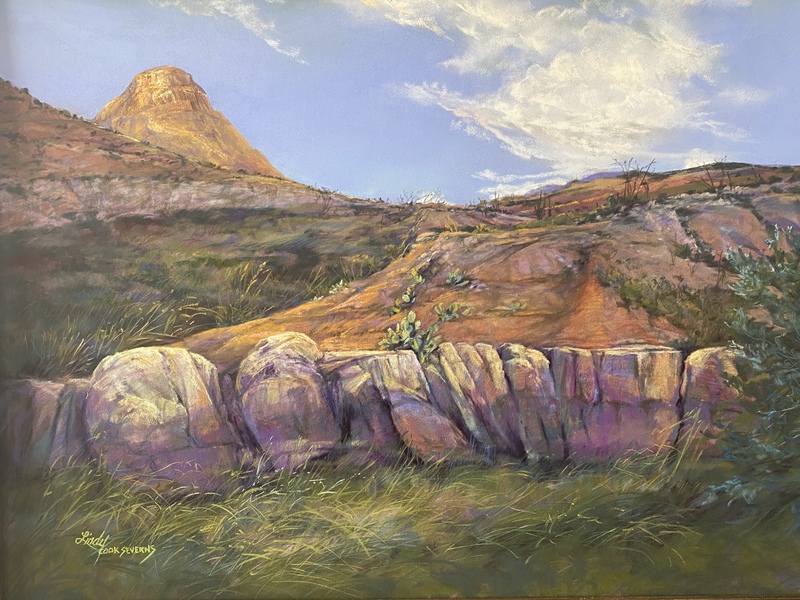
Lindy Cook Severns, A Thousand Colors in a Parched Land, pastel on archival board, 18 x 24 x 0.15 in
Pricing artwork doesn't have to be a headache.
"The price an artist puts on any piece of art doesn't reflect on the intrinsic value of the artwork (or the artist!)," Severns explains, "but rather on the delicate economics of selling something that isn't a necessity."
She emphasizes that supply and demand is perhaps the best way to price art, but it shouldn't be used to judge the artist. "My own art goes up in price when I start running short of originals, not when I get 'better'," she says.
She has developed a pragmatic strategy for pricing her work. "I've made it a practice to raise my prices slowly because I don't want to lower prices later," she explains. "I also religiously keep my price range broad enough so that an average person can afford an original."
To make her art accessible, she adds miniatures and mid-sized paintings to her portfolio alongside her large pieces. "Everyone deserves art in their world," she insists, which is why she sometimes offers studies, painted sketches, prints, art merchandise, and even pages from her sketchbook for sale.
"It warms my heart to get an email from someone who writes that they wrap their fingers around their favorite mountain every morning as they sip coffee from the $30 mug of mine they bought online," she shares.
Despite decades of financial success as an artist, she measures her achievements differently:
"I consider myself a successful artist not because I've made money at it, but because I've given myself permission to regularly do what I do best in this world."
"My success as an artist is being able to share my visions," the dedicated painter concludes. "I am the only person on earth who sees through my eyes."
How Lindy Severns uses Artwork Archive to create Inventory Reports:
An Inventory Report is a detailed document that lists and describes your entire body of work or specific pieces, including pricing information.
It typically includes information such as:
- Artwork titles
- Creation dates
- Medium and materials
- Dimensions
- Current locations
- Price information (if applicable)
- Images of the artworks
Learn how artists like Lindy Severns create inventory reports on Artwork Archive using this step-by-step guide.
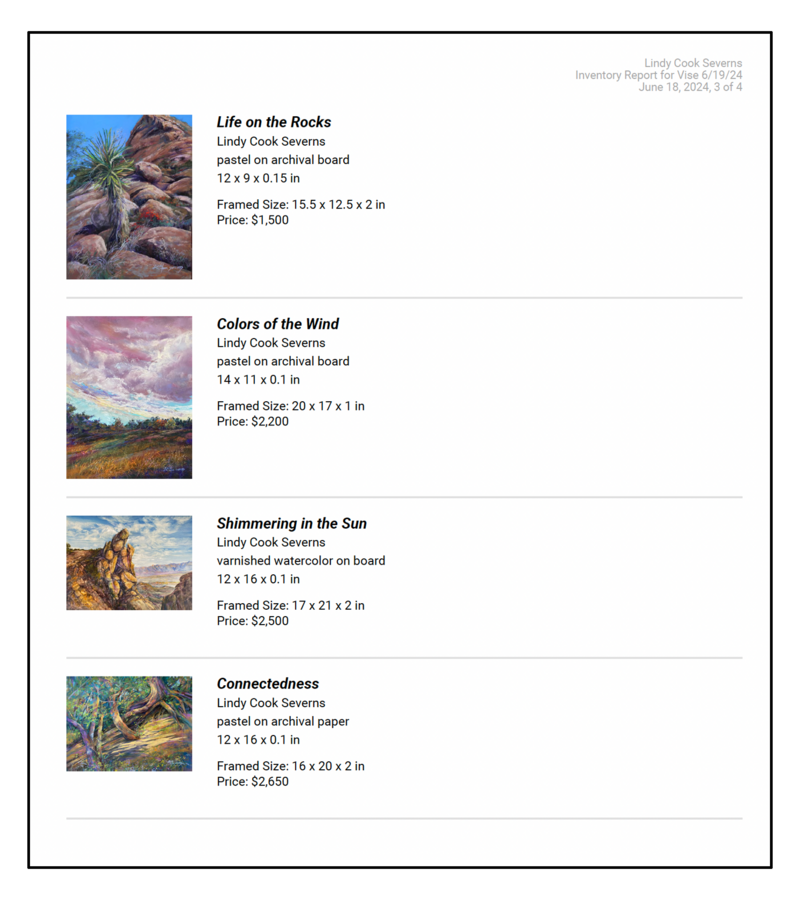
Example of an Inventory Report from Lindy Severns on Artwork Archive
Severns pays close attention to financial management in her art business to keep it sustainable.
"I run financial reports on Artwork Archive fairly regularly to see where I'm at and where I am compared to other years," she explains.
She uses this information strategically, stating, "This also lets me plan ahead and stock up on supplies in anticipation of a rush." Her analysis has revealed industry patterns she hadn't anticipated, such as, "Who knew that Q4 was a busy season for artists?"
Knowledge is power when it comes to a sustainable art practice, and Severns enjoys the satisfaction that comes with tracking her progress. "Sometimes, it simply feels good to know how much money I've made!" she admits.
Today, she maintains a balanced view of her artistic success: "Sales don't define an artist, art does," she states firmly. But, she adds, "it sure feels good when that next sale happens."
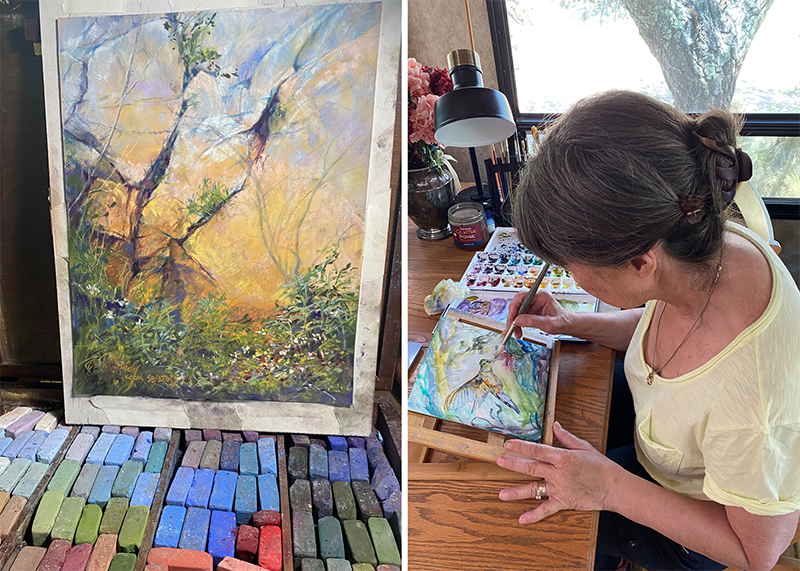
Confident in the business side of her practice, Severns can focus on creativity in her light-filled studio.
We asked Lindy Severns: "What Advice Do You Have for Emerging Artists?"
"If I could speak to my younger self, I'd emphasize that perseverance, not talent, is what separates a successful artist from a frustrated one," she explains.
She counsels newcomers to prepare for a long-term commitment. "Understand that making and marketing art is a long game, and wins can be few and far between," she states. "Celebrate not just financial wins, but also gains in skill, confidence, and your willingness to take creative risks."
On the creative side, she stresses the importance of discipline to aspiring artists. "Make creating a sacred ritual in your life, not something you do only when you have extra time," she advises. "You must regularly show up at your easel instead of waiting for inspiration or the perfect moment."
Growing up, her father was a coach, and some of his motivational philosophy rubbed off on how she thinks about committing to her practice: "If you don't show up, suit up, and sit on that bench, you'll never make a winning shot."
Wondering how successful artists like Lindy Severns manage their careers so efficiently?
Lindy Severns uses Artwork Archive to keep track of all her paintings, sales, and shows without getting in the way of her creative time.
The platform has become an essential tool for her, helping her manage her art business efficiently and profitably.
Interested in seeing how Artwork Archive could work for you?
Our guide offers insights into the inventory management techniques used by professionals in the art world. You'll discover:
- The importance of archiving for your art career
- How to start organizing your artwork effectively
- The benefits of maintaining a comprehensive catalog of your work
- Practical steps to set up an inventory system that works for you
- Tips for choosing the right platform to suit your needs
- Ways to incorporate archiving into your artistic routine without disrupting your creativity
You can download the free guide here or start a 14-day trial of Artwork Archive here.
